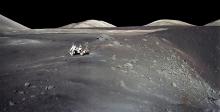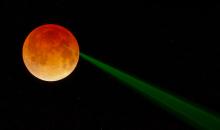Listen to today's episode of StarDate on the web the same day it airs in high-quality streaming audio without any extra ads or announcements. Choose a $8 one-month pass, or listen every day for a year for just $30.
You are here
Eating (Lunar) Dust
If cockroaches ever find their way into habitats on the Moon, they’re likely to thrive. In a study a half century ago, roaches that were fed lunar dirt grew a bit faster than those that weren’t.
Before the first Apollo astronauts landed on the Moon, some scientists were concerned they might bring back dangerous microscopic organisms. The odds were low because the lunar surface is bombarded by deadly radiation. But the risk was deemed high enough to take some precautions. The astronauts from the first three missions spent three weeks in quarantine, for example. Samples weren’t sent to researchers until some had been examined for microbes. And several types of Earth life were exposed to the samples.
The results of that study were published 50 years ago today. Researchers ground up a few grams of the rock and dirt from Apollo 11, the first lunar landing mission. They mixed it in with the water that was holding fish, shrimp, and oysters. And they fed it to birds, flies, and cockroaches.
Scientists kept an eye on the subjects, along with control groups, for four weeks. None of the animals exposed to the samples were any worse off than the ones in the other groups. The roaches actually did a little better with lunar dirt than without, although the difference wasn’t much.
The tests confirmed that the lunar surface is lifeless. That allowed scientists to get on with studying the samples — a safe treasure from the surface of the Moon.
Script by Damond Benningfield






